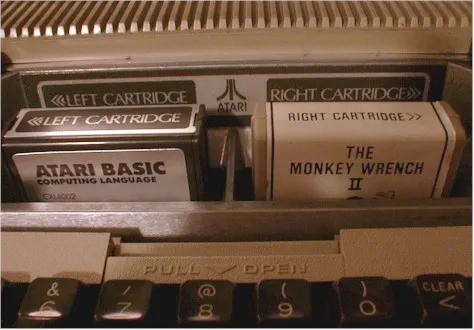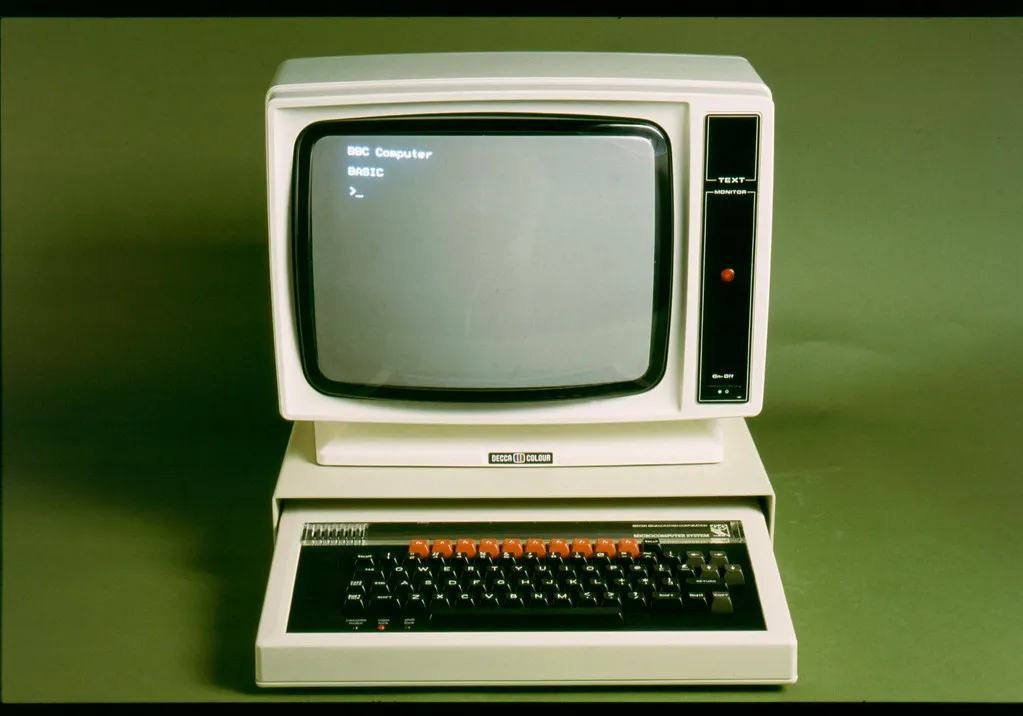The BASIC Language Turns 60
Happy Birthday to the BASIC programming language which celebrated its 60th anniversary recently! This event finds me in something of a nostalgic mood as BASIC represented my first exposure to the world of computer programming. Below you'll find a self-indulgent look-back on my first few baby steps as a "programmer" but I'm also curious to hear about your own experiences. Leave a comment below if you'd like to join in with reminiscing about the "good old days"!
My first computer
Well okay, it wasn't technically mine. Some time in the mid '80s my dad bought an Amstrad CPC 6128 (with colour monitor!). I vaguely recall that he bought it to "help with the accounts" but I'm almost certain that he just wanted a toy to play with.
The machine came with a mighty 128KB memory allowing it to display an astonishing 16 colours in its lowest resolution mode of 160 x 200 pixels!
The computer itself is long gone but, because I have a habit of not throwing things away, I still have the original manual!
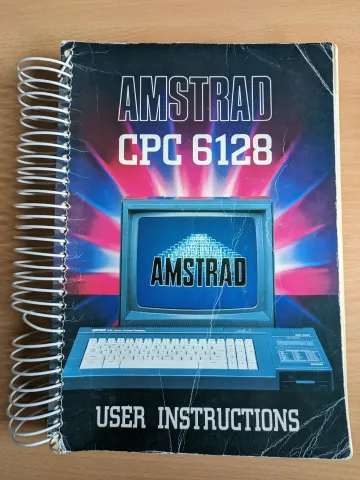
It's seen better days!
What's great about this manual is that it isn't just a guide on how to plug the various bits of hardware together, it also teaches you how to program using the built-in BASIC programming language.
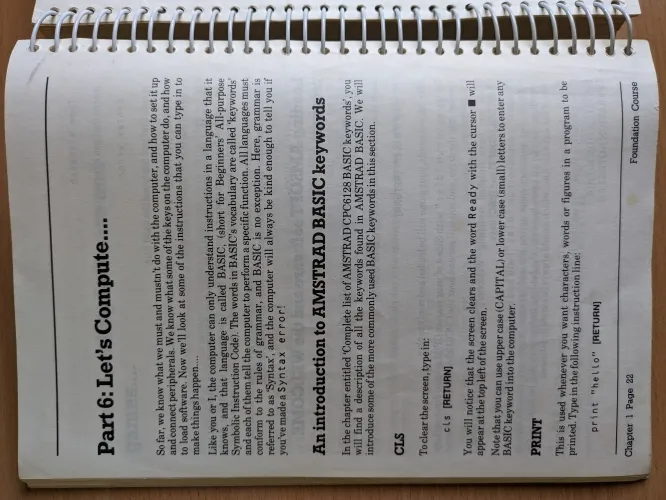
Simple stuff but you have to start somewhere!
Revisiting the past
Having a manual that was also a programming guide was pretty useful as it turned out, because, unlike modern computers with their new-fangled graphical user interfaces, switching on the Amstrad landed you directly at a command prompt.
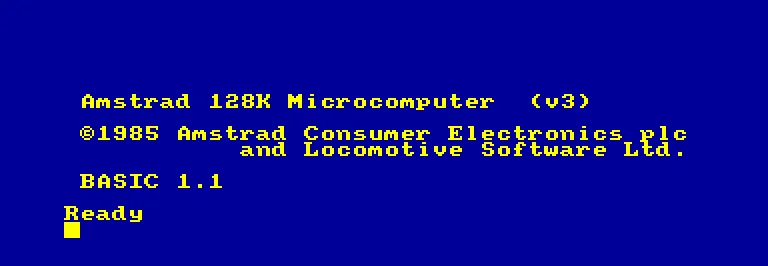
The world is our oyster!
You could, and indeed had to begin writing code immediately. As is tradition, the first command you must write in any programming language instructs the computer to say hello.
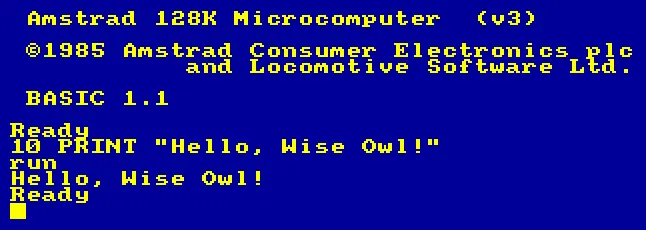
It's alive!
If you're wondering how Alan Sugar was able to predict the existence of Wise Owl way back in 1985, I actually used the Caprice32 emulator to capture the above screenshot. This wonderful piece of software allows you to convert any modern computer into one which performs like an 8-bit computer from the 1980s. Can you imagine working on a machine with a 4MHz processor? You can now!
Monkey see, monkey do
The examples in the manual gave me my first taste of writing code although, as an 8 year old, I didn't honestly have much understanding of what I was doing! However, I do have fond memories of spending many hours replicating the listings from the manual and watching cool things happen on screen.
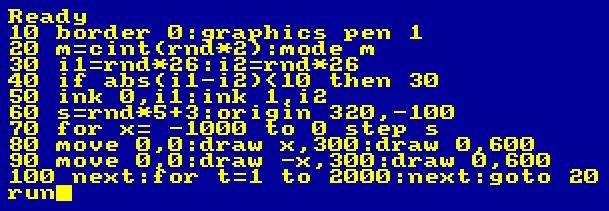
At the time, I really didn't have a clue what any of that meant!
The graphics examples were always the most interesting, although they don't look that impressive these days!
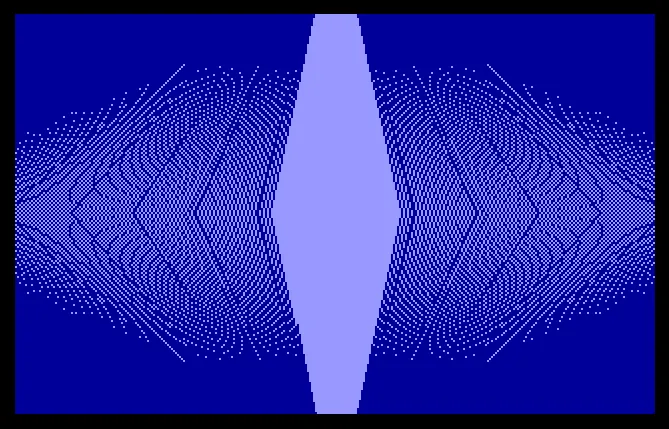
It's a bit more interesting when you see it moving!
Perhaps the most satisfying examples involved those at the back of the manual where listings for entire games like Breakout (called Bustout in the manual probably to avoid copyright issues with Atari) and Bomber could be found.
I'd spend hours typing out what felt like hundreds of lines of code, and then hours more fixing all my syntax errors - just as I still do today in other languages!
What we mostly used the computer for
While typing out other peoples' code was a great introduction to programming, I sadly didn't quite appreciate what an opportunity I'd been presented with. It didn't take long to discover that I could exchange my hard-earned pocket money for games written by professionals and it took only a single command to load them.
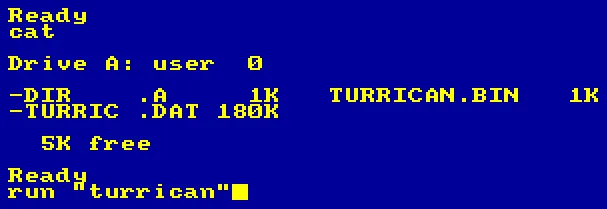
This is probably my most-typed command.
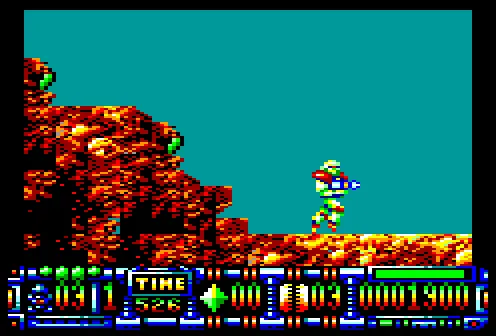
Turrican II wasn't my first game but it was almost certainly my most-played.
My discovery of games may have derailed a budding career in programming, but I regret nothing!
What's this got to do with modern computer training?
Perhaps a little more than you'd expect. Several modern languages can trace their roots directly to BASIC, including Microsoft's Visual Basic, Small Basic and, of course, Visual Basic for Applications (VBA). We still deliver plenty of VBA courses each year to delegates from a wide range of industries.
It's probably no great surprise that the core programming concepts of these languages are the same as in the BASIC language - you'll still encounter procedures, variables, conditional statements and loops to name but a few. What's perhaps a little more interesting is just how closely the syntax of a language like VBA matches that of its ancestor.
Here's a fairly useless BASIC program to store a list of three names in an array, loop over the array and print each of the names:
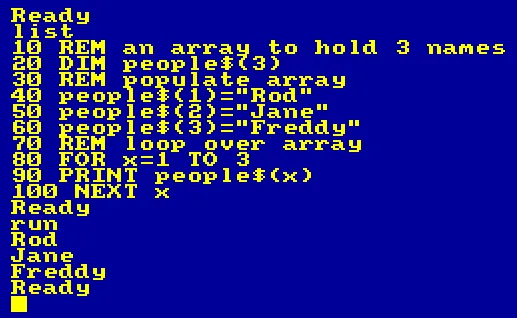
There's an extra '80s reference here for UK readers of a certain vintage.
In the above listing, REM (short for remark) is used to add comments. The $ sign after the name of the people array is a type-declaration character indicating that the array can store string values.
Here's the equivalent program written in VBA:
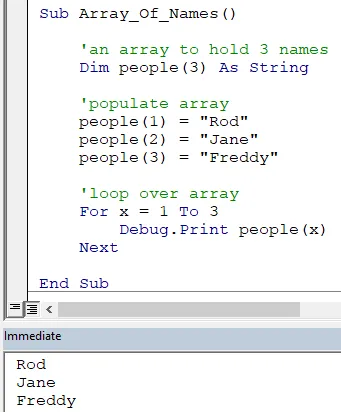
It's certainly easier to read, but equally useless!
The ability to lay out code neatly and the use of colours for different types of code helps to make it easier to read. If you're still living in the past however, you can make your VBA code more BASIC-like by using line numbers, type declaration characters and Rem rather than apostrophes for comments.
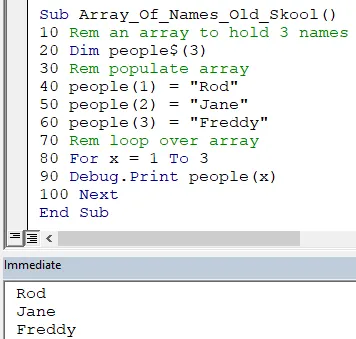
For extra authenticity I've removed the blank lines and indenting.
While it's fun for nostalgia, you'd be mad to do this regularly!
Next language
I'd love to hear about your own first programming experiences in the comments below. And, if this article has piqued your interest in learning how to program in a more up-to-date language you can find information on our VBA, Office Scripts, Python and Visual C# courses on our website. Thanks for reading!

















